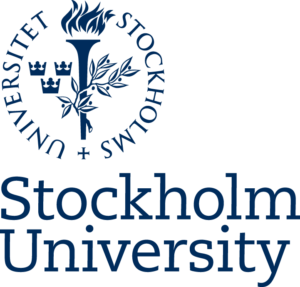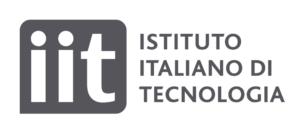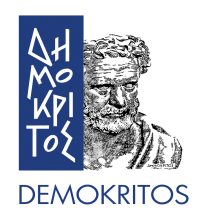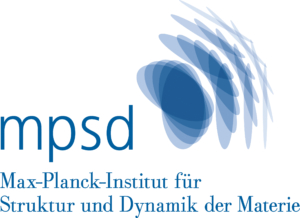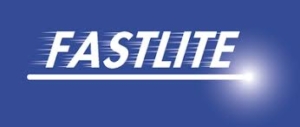Consiglio Nazionale delle Ricerche (CNR) - Coordinator of the project
The Istituto di Fotonica e Nanotecnologie (CNR-IFN) carries out innovative research in photonics and nanotechnologies considering both the fundamental aspects and those applied involving the development of novel photonic devices and systems, optoelectronic equipment, and electronics devices. CNR-IFN is tightly integrated with the national scientific community and collaborates with the major international Universities and research centers through targeted projects funded by main national and international agencies and foundations.
CNR-IFN belongs to the National Research Council (CNR), which is the largest public research institution in Italy and is in charge to carry out, promote, spread, transfer and improve research activities in the main sectors of knowledge growth and of its applications for the scientific, technological, economic and social development of the Country.
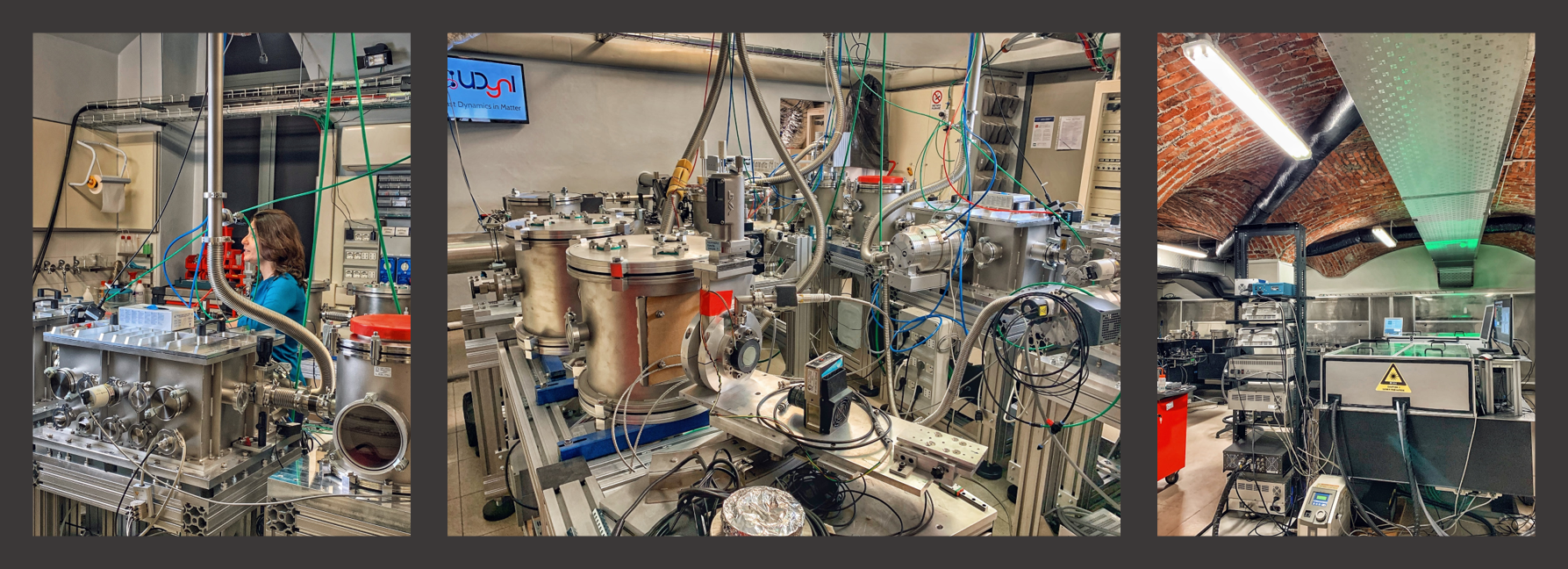
Forschungsve Rbund Berlin EV (FVB-MBI)
Max Born Institute
The Max Born Institute for Nonlinear Optics and Short Pulse Spectroscopy (MBI) is a non-profit research institution, organized in the legal form of a registered association (Forschungsverbund Berlin e.V.). The MBI is scientifically independent but without legal personality. It is at the same time member of the Leibniz Gemeinschaft and is funded (50% each) by the German federal government (BMBF) and the German states (Länder), in particularly by Berlin. MBI is located at Berlin-Adlershof, City for Science, Technology and Media, one of Germany’s major technology parks and a focal point for science, innovative enterprises and media in the region of the German capital. It is positioned in the South-East of Berlin.
The MBI maintains close scientific relations with the three Berlin universities. Its directors are jointly appointed by the institute and one of the universities. Marc J. J. Vrakking is full professor at the FU-Berlin, Stefan Eisebitt at the TU-Berlin and Thomas Elsässer at the HU zu Berlin.
The institute was founded by the end of 1991 and consists presently of about 180 members of staff, among them 90 scientists (including guest scientists and PhD students).
The MBI conducts basic research in the field of nonlinear optics and ultrafast dynamics of the interaction of light with matter and pursues applications that emerge from this research. It develops and uses ultrafast and ultra-intense lasers and laser-driven short-pulse light sources in a broad spectral range in combination with methods of nonlinear spectroscopy.
MBI’s research program focuses on new sources for ultra-short and ultra-intense light pulses, pulse shaping, pulse characterization, measuring techniques for ultra-fast processes in a broad spectral range from the mid-infrared to the x-ray region, ultrafast and nonlinear phenomena with special emphasis on atoms, molecules, clusters and plasmas and surfaces and solid state.
With its research the MBI fulfills a nationwide mission and is an integral part of the international science community. The MBI is involved in a large number and variety of cooperative research projects with universities, other research institutions and industrial partners.
The research structure of the Max Born Institute comprises 10 research projects and two infrastructure projects, organized in 4 focus areas. Complementary to this, the organizational structure with 3 research divisions (each with 3 departments) defines the key fields of scientific competence of MBI-scientists and the corresponding scientific equipment. The combination of modern laser development and measuring technique with its interdisciplinary application in basic research and for emerging key technologies constitutes the unique profile of the MBI and its attraction to external cooperation partners.
Centre National de la Recherche Scientifique (CNRS)
The CNRS
The French National Centre for Scientific Research is among the world’s leading research institutions. Its scientists explore the living world, matter, the Universe, and the functioning of human societies in order to meet the major challenges of today and tomorrow. Internationally recognised for the excellence of its scientific research, the CNRS is a reference in the world of research and development, as well as for the general public.
The lab
The Laboratory of Physical Chemistry-Matter and Radiation (LCPMR) is a Joint Research Unit (UMR 7614) attached to Sorbonne University and the CNRS chemistry and physics institutes. The unit is located on the Pierre and Marie Curie campus, place Jussieu in the 5th arrondissement of Paris, and brings together teams of physical chemists and physicists, both experimental and theoretical, specialized in the study of radiation-matter interactions.
Our group
Our study focuses on the processes that take place after inner layer excitation of molecules and Van der Waals aggregates excited in the inner layer by third generation synchrotron radiation and free electron laser facilities. We are particularly interested in ionization-induced molecular alignment processes, non-electric dipolar photoionization processes and resonant inelastic scattering of excited molecules in the soft and hard X-ray ranges (1-10 keV).
Links
Universiteit Utrecht (UU)
Our world is changing rapidly. The global issues we are facing are complex in nature. They are not restricted to one generation or continent and cannot be resolved based on a single perspective. It is time to issue an open invitation to all.
We are Utrecht University. The place for new collaborations and cross-pollination. Students, academic and administrative staff, policymakers, members of the public, professionals and business owners; you are invited to contribute to a better world.
Utrecht University researches, educates and communicates the results across disciplines and shares knowledge and insights that lay the foundation for the future. Shared perspectives are the source of tomorrow’s solutions.
We aim high at solving problems in the world. With open minds, open attitudes and open science, we join forces to create solutions that have a positive impact on us all. No matter what social challenges we might face.
Ever since its establishment in 1636, our university has been encouraging and promoting dialogue. Deeply rooted in the city of Utrecht, we are connected in our communities locally, nationally and internationally. Visit the website
The group of Materials Chemistry and Catalysis (MCC) is part of the Debye Institute for Nanomaterials Science at Utrecht University, which focuses on the synthesis, characterization, and performance of heterogeneous catalysts. These allow efficient chemical conversions (and hence decrease the use of energy and raw materials) but are also essential to allow the transformation from fossil to renewable fuels. With fundamental research, we unravel structure-performance relationships, but we also investigate large-scale existing industrial processes (methanol synthesis, Fischer Tropsch synthesis, hydroisomerization, ammonia synthesis, epoxidation, and other selective hydrogenation and oxidation reactions in both gas and liquid phase).
Furthermore, we are very active in the field of energy materials: for instance, to produce electrocatalytically fuels from CO2 and H2, reversible hydrogen storage, and next-generation battery materials. We lead the materials research line in RELEASE, the national consortium to enable large-scale reversible energy storage. Another stronghold is the characterization of these complex materials with advanced (in-situ and operando) spectroscopic and microscopic techniques, most notably advanced X-ray absorption spectroscopy and transmission electron microscopy.
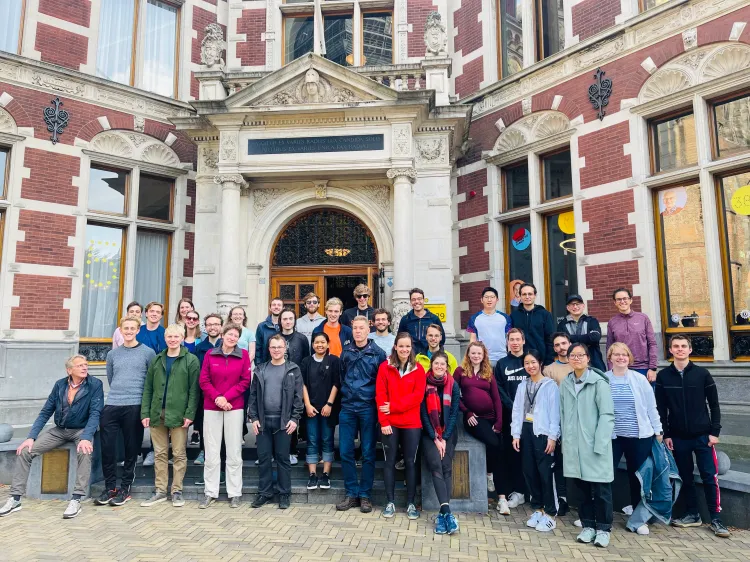
Stockholms Universitet (SU)
University facts
University Stockholm University has about 29,300 students (full-time equivalents), 1,400 doctoral students, and 5,700 members of staff. Total revenues amounted in 2020 to 5,45 billion SEK. Find more facts and figures here.
Ranking
Stockholm University is one of the 200 highest-ranked universities in the world and one of the top 100 universities in Europe according to several well-established university ranking tables.

Research integrity and ethics
Stockholm University protects the quality, integrity and independence of research, and this requires research to be carried out in accordance with good research practice.

The University in figures
Stockholm University has 29,300 students (full-time equivalents), 1,400 doctoral students, and 5,700 members of staff. Below you will find even more facts for the year 2020.

Fundacio Institut de Ciencies Fotoniques (ICFO)
ICFO is a research institution that aims to advance the very limits of knowledge using photonics, namely the science and technology of harnessing Light. Light, especially laser light, is one of the major enabling technologies currently available to humankind. Our research thrusts target the global forefront of science, and aim to tackle several of the key challenges faced by our society at large. We focus on current and future problems in Health, Energy, Information, Safety, Security and caring for the Environment.
Our most valued assets are our PhD students and post-doctoral researchers. They are bright, ambitious young women and men, with a talent for discovery and strong moral values, who aim to achieve difficult but important goals. Central to our mission is the training of the next generation of scientists and technicians through courses, seminars, access to cutting-edge experimental infrastructures, and mentoring by researchers that are among the best in the world in their field. This training aims to equip talented students with unique capabilities that help them become future leaders, either in the academic or in the industrial world.
ICFO’s core spirit is ingenuity, fascination for the unknowns, and hard work, attitudes shared by many researchers around the world with whom ICFO researchers continuously interact and correspond.
Listen to your heart: If you share these values and ambitions and you like working with light, surf our web to identify the challenge that most interests you, and get on board. A new project is about to leave port to take you on an exciting intellectual trip.
Istituto Italiano di Technologia (IIT)
The Center for Nano Science and Technology (CNST) is one node of the network established by the Istituto Italiano di Tecnologia with Italian academies in order to foster synergy in the national research. The mission of the center is “innovation”, therefore the goal of the CNST scientific team is to transfer new basic knowledge into new applications.
CNST has a focus on material science, and it is able to conduct the complete production line, from conceiving and realizing a new material to its application in devices (solar cells, transistor and LEDs), through a comprehensive characterization. The areas of competence are Material Chemistry, Molecular Electronics, Printed Electronics, Nanotechnology Fabrication and Optical-Photophysical-Morphological and Theoretical Characterization.
Elettra - Sicrotrone Trieste SCPA (ELETTRA)
Elettra Sincrotrone Trieste is a multidisciplinary international research center of excellence, specialized in generating high quality synchrotron and free-electron laser light and applying it in materials and life sciences. Its mission is to promote cultural, social and economic growth through:
- Basic and applied research
- Technology and know-how transfer
- Technical, scientific and management education
- Role of reference in the national and international scientific networks
We develop excellence by providing state-of-the-art services for high-quality, internationally recognized research, thus contributing to enhance the positive impact and relevance of science on society.


The main assets of the research centre are two advanced light sources, the electron storage ring Elettra and the free-electron laser (FEL) FERMI, continuously (H24) operated supplying light of the selected “colour” and quality to more than 30 experimental stations. These facilities enable the international community of researchers from academy and industry to characterize structure and function of matter with sensitivity down to molecular and atomic levels, to pattern and nanofabricate new structures and devices, and to develop new processes. Every year scientists and engineers from more than 50 different countries compete by submitting proposals to access and use time on these stations. These are selected by peer-reviewed by panels of international experts on the basis of scientific merit and potential impact, and the winners are granted valuable access time as a contribution to their research. Because of its central location in Europe, Elettra Sincrotrone Trieste is increasingly attracting users from Central and Eastern European countries, where the demand for synchrotron radiation is in continuous growth, and is part of the primary network for science and technology of the Central European Initiative (CEI). But our outreach is far larger and reaches many more Countries in the world through long-term relations with the International Center for Theoretical Physics (ICTP) of UNESCO and the International Atomic Energy Agency (IAEA). The access by researchers from developing countries has tripled over the last few years, and the Indian research community is one of the largest users. Elettra Sincrotrone Trieste has been the coordinator of the EU-supported networks involving synchrotron and free electron lasers in the European area, in the last decade. Such networks promote transnational access, joint research activities and collaborations among the laboratories to improve the overall service offered to European users.
National Center for Scientific Research "Demokritos" (NCSRD)
The Institute – At a glance
The Institute of Nanoscience and Nanotechnology (INN) is one of the leading research institutes in Greece with cutting edge activities very much aligned with most of the Horizon 2020 R&D priorities and Europe’s Key Enabling Technologies (KETs), such as Advanced Materials, Nanotechnology, Micro&Nanoelectronics, Nanobiotechnology, and Photonics. The skilled human capital and creative capacity of the institute supported by a unique in Greece- collective infrastructure provide a distinctive ecosystem for fostering and promoting world-class basic and applied research. Strong ties with the industry and numerous SMEs further assist the institute’s effort to transform the knowledge generated into innovations and to transfer them to the market. One of the main characteristics of INN’s newly-forged and distinctive character was its flexibility and willingness to turn one of its original impediments, aka the very large number of researchers (INN is by far the largest institute in the country, even larger than some entire Greek research centers), into one of its strongest assets: INN is today the most multidisciplinary research institute in the country and takes great pride in including cross-fertilization activities and horizontal synergies across its wide spectrum of disciplines in its day-to-day scientific activity.
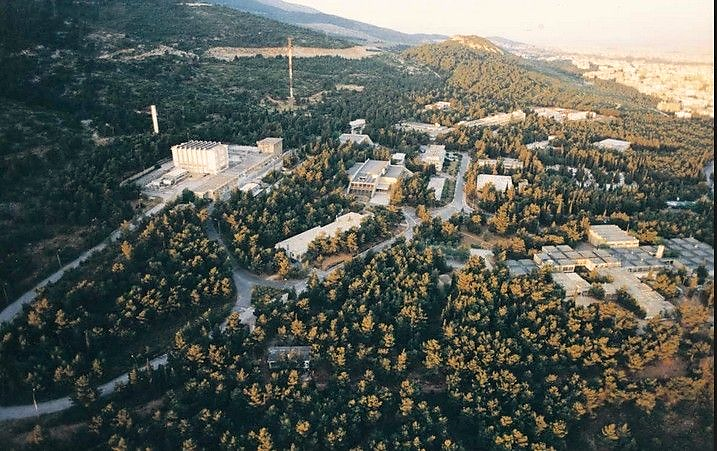
The R&D&I activities of INN are structured in five Programs aligned with the research priorities of the institute:
(1) Chemical Sciences for Nanostructures and Biological Applications,
(2) Cultural Heritage (Study and conservation of cultural heritage materials),
(3) Magnetism and Superconductivity: Advanced Materials and Applications,
(4) Nanochemistry and Nanomaterials (Advanced nanomaterials and smart processes)
(5) Nanoelectronics, Photonics, and Microsystems.
The expertise of the INN scientific personnel covers a wide range of disciplines involved in the development of materials, devices and systems as well as in the study of related physicochemical processes. More specifically it includes synthesis and growth of molecules and materials, device design, fabrication and evaluation, structural, physicochemical, and analytical characterization as well as theory and simulation on multiscale modeling, non-linear systems, and molecular thermodynamics.
The Epitaxy and Surface Science lab (ESSL), part of the Institute of Nanoscience and Nanotechnology of NCSR DEMOKRITOS, started its operation as a Molecular Beam Epitaxy laboratory in the year 2000 and has 20 years history of research on materials and devices for advanced CMOS and post CMOS nanoelectronics. Headed by Dr. A. Dimoulas, the team is 8-9 members on average consisting of a senior scientist, postdoctoral research associates and PhD students.
In the last ten years, the lab has become a unique facility in Greece for Surface Science encompassing a number of surface analytical techniques such as Scanning Tunneling Microscope (STM), Reflection High Energy Electron Diffraction (RHEED), X-ray, and Ultraviolet Photoelectron Spectroscopy (XPS/UPS) and Angle-Resolved Photoelectron Spectroscopy (ARPES), all integrated with the MBE chamber for in-situ characterization of the grown thin films. ARPES is the only such technique available in Greece and among the few existing in European labs and around the work, apart from the large-scale synchrotron facilities, which offers the capability to image the electronic band structure of crystalline solids and in particular TMDs. The lab is complemented by a CVD system equipped with a 4-inch cold wall chamber for the growth of graphene, a micromanipulator stage for electrical evaluation of devices in the range 4-475 K, a chemical hood for simple device processing, and a high-performance workstation for first-principles calculations based on Density Functional Theory (DFT).
The research team has established:
- scientific excellence receiving two ERC grants (Advanced and Proof of Concept), as well as Marie Curie and FET grants.
- leadership in European research by coordinating a number of large Industrial leadership (ICT) and Scientific Excellence (FET) European projects
The current research interests include the development of the MBE growth of layered topological insulators and 2D transition metal dichalchogenide (TMD) materials. The main focus is on 2D TMDs with non-trivial topology, such as topological Weyl and Dirac semimetals.
For more information about the lab and the team follow this link: https://inn.demokritos.gr/project/graphene-and-two-dimensional-materials-for-nanoelectronics-about-the-group/
Maxplanckgesellschaft zur Forderung der Wissenschaften EV (MPG)
The Max Planck Institute for the Structure and Dynamics of Matter (MPSD) is an institute of the Max Planck Society (MPG), one of the world-leading research organizations for science and technology. As one of flagship institutes of the MPG, the MPSD has an excellent international reputation in the field of the ultrafast structural dynamics. The MPSD is located at the center of a group of newly established research institutes on ultrafast dynamics on the DESY campus in Hamburg and is close to the European XFEL. At the same time, the MPSD is one of the partners of the cluster formed with the Center for Free- Electron Laser Science (CFEL), DESY and the University of Hamburg.
The MPSD consists currently of two departments whose research is focused on dynamical phenomena in matter down to the elementary timescales of atomic and electronic motions, the femtosecond or attosecond timescale.
The Theory Department led by Prof. Angel Rubio is part of the SMART-X Innovative Training Network (ITN). The scientific work of the Theory Department aims to characterize new non-equilibrium states of matter, to discover the general principles that describe and control quantum systems far from equilibrium, and to orchestrate the behavior of many electrons and atoms to create new phenomena/states of matter. A major focus is placed on developing novel theoretical tools and computational methods to investigate and control the electronic response of matter to arbitrary time-dependent external electromagnetic (classical and quantum) fields.
Within the SMART-X ITN the MPSD participates in the working packages 2 and 3 (WP2 and WP3) with the topic “First-principles modelling of core level spectroscopy of solids”. The main objective is to study core electron excitations of pumped 2D materials and signatures of non-adiabatic electron-phonon coupling in solids.
Fastlite SAS (FASTLITE)
FASTLITE designs and manufactures scientific instruments for the ultrafast laser community since 1999: acousto-optic pulse shapers, pulse characterization devices and, since 2012, high-average-power mid-infrared femtosecond systems. The company now employs ~20 people including 9 PhDs. The company has two facilities in France: one in Orsay (south of Paris) and one in Antibes (French Riviera).
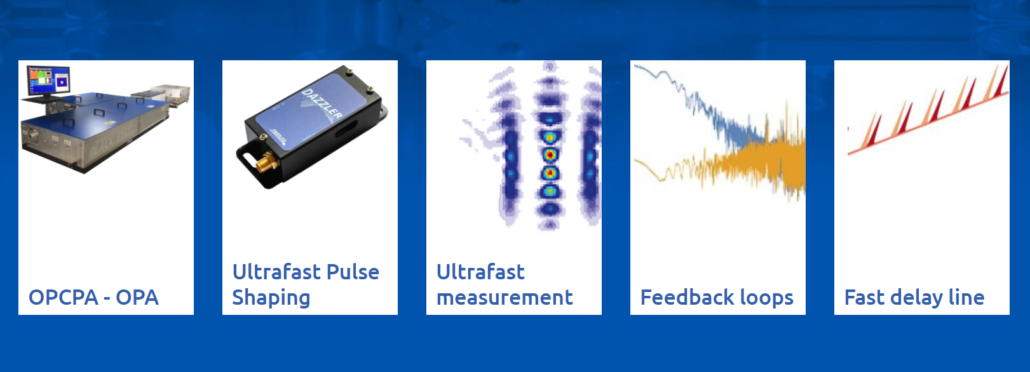
Greateyes GmbH (GREATEYES)
COMPANY PROFILE
Greateyes GmbH is an aspiring manufacturer of scientific, deeply cooled high performance cameras for demanding imaging and spectroscopic applications. The company is passionate about innovative, cutting-edge technology and strives for continuous product improvement. Customers can choose from a large portfolio of cameras, all featuring ultra low noise, high dynamic range, and excellent sensitivities from the X-ray through EUV to the VIS and NIR region. Various pixel matrices up to 16.8 megapixel are available. The compact detector design enables flexible integration into existing setups either as standalone detector or attached to a vacuum chamber. Full flexibility is particularly offered by an in-vacuum camera series designed and optimised to be operated under UHV conditions.
Furthermore, greateyes has become one of the leading international supplier of electroluminescence (EL) and photoluminescence (PL) measurement systems. These devices help to optimize wafer and solar cell/module performance when used in R&D laboratories but also make detailed quality assessments within the manufacturing process possible. For its LED-based PL system greateyes was awarded the Berlin Brandenburg innovation prize. Up to now it is still the only commercially available system of its kind and utilized by some of the most renown solar research centres in the world.
The company has profound knowledge in low-noise (in-vacuum compatible) electronics, (ultra-high) vacuum design, and deep sensor cooling. It holds several patents in this context and received awards for its’ innovative products. Within the last decade greateyes showcased three world’s first products such as an X-ray CCD camera realising sub-pixel resolution. Having a PhD rate of 33%, greateyes is highly dedicated towards constant innovation. Research projects are carried out frequently to create the products of tomorrow.
The German-based company was founded in 2008 as a spin-off from Humboldt University in Berlin. The start-up quickly developed into an international acting company. Today it has strong customers and partners in research and industry. Cameras or systems have been sold all across the globe.
Our passion is the continuous advancement of our unique camera technology and associated products. Our central goals are satisfied customers, innovation and good team spirit.








